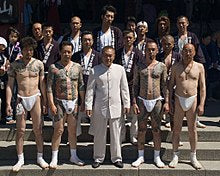
Yakuza Gang
Share
A yakuza (ヤクザ) is a member of an organized crime group in Japan (mafia). The yakuza are represented by four main syndicates, present throughout the archipelago, and also have branches in the Pacific area, and even in Germany and the United States. They officially had 28,200 members at the end of 20191 , in the broadest sense of the term.
They would be the largest organized crime organization without being secretive. Thus, the clans are generally well established, most of the time under the cover of a legal structure of an associative.
Yakuza Gang Etymology
The origin of the word "yakuza" appears during the Tokugawa shogunate (1603-1867)3. It is derived from a combination of the Japanese card game called Oicho-Kabu, close to baccarat, which is traditionally played with kabufuda or hanafuda cards.
At the end of a game, the values of the cards are added together and the unit of the sum represents the player's score. The goal of the game is to get as close to 9 as possible.
"Ya" comes from yattsu, which means eight (can also be said hachi), "ku" means nine (the word kyu is also used), and "za" is probably a distortion of "san" which means three. Ya-ku-za is thus the sum of 8, 9 and 3, which is 20 and thus a score of 0, which is a losing hand. By a kind of perverse pride, this name that these Japanese gangsters give themselves therefore means "losers", "good for nothing ". The yakuzas are originally from the poorest, the excluded of society.
Another origin is sometimes evoked: the police had to enter temples to flush out gamblers, but not without hesitation, because Shinto shrines are sacred. On a chair at the entrance, a watchman kept watch. The "role" (yaku) of the chair (za) was thus to act as a bulwark between the police and the gamblers.
In Japanese legal terminology, yakuza organizations are called bōryokudan (暴力団), literally "violent group ". The yakuza consider this term an insult, as it applies to any violent criminal. In the Western press, they are sometimes identified with the "Japanese Mafia," by analogy with other organized crime groups, such as the Sicilian Mafia.
Yakuza Gang History
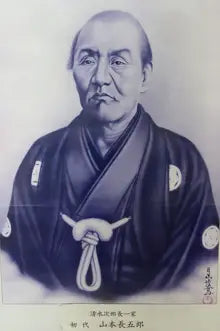
The beginnings: the Edo era
Despite their notoriety in modern Japan, the precise origin of the yakuza is still a matter of controversy.
The yakuzas, descendants of the bakuto and tekiya...
A yakuza with a dragon tattoo runs to help his comrade, who is fighting against the police.
The first hypothesis would be that the yakuza are the heirs of two distinct corporations:
The bakuto (professional gamblers) who worked in the cities, markets and fairs, and controlled the world of gambling, which was very fashionable at the time (it is still one of the most lucrative activities of the yakuza today)
tekiya (peddlers and hawkers) who worked on the roads.
Originally, the members of these two groups were recruited from the same backgrounds (landless peasants, thugs). Each group, once constituted, attached itself to a fixed and delimited territory.
They could have up to 500 armed men, such as that of bakuto Shimizu no Jirocho (Chogoro Yamamoto) (1820-1893) , the first rich and famous bandit of the modern era. The yakuza inherited some of the traditions of bakuto, including the tradition of yubitsume (cut finger) and irezumi (Japanese tattoo).
... or machi-yokko
The yakuza themselves favour another hypothesis: they claim to be descended from the machi-yokko ("servants of the cities").
At the time of demilitarization, which took place as early as 1603, and which occurred during the "Tokugawa Pax " , a period of peace that lasted 250 years, the samurai represented 10% of the population, or 2 to 3 million people. 500,000 were demobilized, some of whom became rōnins, samurai without a master, in breach of the law .
They became highwaymen, terrorizing the population, wreaking havoc, even killing citizens for fun, hence their name "kabuki-mono" ("madmen").
There is no immediate link with theater, but the word "kabuki" means to be extravagant, eccentric. Hence the idea of a character who does not follow the rules and who manifests himself.
Kabuki-mono could be distinguished by their particular mode of dress, their haircuts, the long sword they carried and their general bad behavior . They also used to practice tsujigiri, which consisted in testing the effectiveness of a new blade on passers-by.
Some groups were highly organized and called themselves the hatamoto-yakko, i.e. the "servants of the shogun ".
In the course of the 15th century, the ancestors of the yakuzas would have gathered to create defense associations to protect themselves from the kabuki-mono. They thus became machi-yokko, which could be described as defenders of the oppressed.
According to Christian Kessler, a columnist for the French magazine Historia and a teacher in Japan, it was really at the beginning of the 18th century that yakuza organizations were created in the large urban centers of Osaka and Edo (the former name of the city of Tokyo) under the leadership of gang leaders.
Yakuza groups are also made up of hinin (non-humans) and eta (unclean) who, in the social hierarchy, are behind samurai, craftsmen and merchants. The hinin include entertainers, prison guards, executioners, etc.; as for the eta, they are essentially made up of those whose trade is related to the slaughter of animals.
Moreover, the origin of their discrimination is undoubtedly to be found in the Shinto religion and in Buddhism, which consider any occupation related to death and blood to be a stain.
Although "liberated" in 1871 during the Meiji restoration, these burakumin (literally "hamlet people") have always suffered from multiple caste discriminations, mainly in employment and marriage.
This state of affairs continues to this day and still contributes to the ranks of the yakuza. Burakumin make up 70% of the members of the Yamaguchi-gumi, the largest yakuza clan.
From the Meiji period to 1945
The status and activities of the yakuzas were to evolve progressively, in parallel with the political upheavals and the Japanese structure. The entry into the modern era with the Meiji era (1868) was to symbolize the renewal of the yakuzas , who were to extend their power over the whole society.
The new ideas introduced by Karl Marx frightened a part of the population, which served the nationalists. Supported by the conservative underworld, they kept power, despite the first violent strikes that broke out in the coal mines.
The activities of the Tekiya were to intensify, thanks to legal cover (authorized by the links they had forged with the government to a large extent), which ensured that the emerging part of their activities was completely legal.
In addition, the practice of recruitment will greatly intensify, providing organizations with more and more manpower to expand their powers. As a result of the growing importance of the Tekiya, trafficking intensified and the black market and sex trade developed.
At the end of the 19th century and at the beginning of the 20th century, the links between yakuzas and politics became even stronger, driven by the opening of the country to the West.
The yakuzas, remaining very attached to traditions, refused all contacts and benevolent actions towards Europeans and Americans. They organized terrorist acts targeting political figures who were in favor of opening up the country; two prime ministers and two finance ministers, among others, were assassinated.
They were nevertheless in favour of Japan's colonial expansion; it was with this aim that they plotted, with the complicity of the Ministry of War, the assassination of Queen Min of Korea, who was pro-Russian, on October 8, 1895.
This paved the way for the Japanese intervention in this country and the annexation that followed in 1910 and lasted for 35 years until the end of the Second World War.
In the 1930s, the yakuzas enjoyed great freedom, thanks to their ideological rapprochement with the ultra-nationalist right, which was very close to power at the time. During the invasion of Manchuria, in China, these links were very useful.
The yakuza were present for the occupation, and organized the trafficking of precious and strategic materials, which enabled them to amass a colossal fortune. The link between the thugs and the yakuza was not only the result of the occupation, but also the result of a series of events.
The link between the thugs and the politicians is ensured by certain godfathers, the Kuromaku. Thanks to their accumulated wealth, some of these godfathers played a very important role in the post-war period, the most famous and influential being Yoshio Kodama and Ryoichi Sasakawa.
They were also involved in finding and exploiting comfort women for the occupying Japanese army.
From the end of World War II to the early 1990s
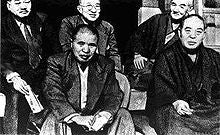
Following the defeat in World War II, Japan was occupied by the Americans. Trafficking was organized with the tens of thousands of soldiers of the occupation force, especially in drugs. The yakuzas were involved in prostitution, which had become illegal.
They also took advantage of the generalized chaos to appropriate land illegally in cities where cadastral plans had been burned. At the same time, Koreans and Japanese were taking advantage of the fact that they were not allowed to buy land.
At the same time, Koreans and Taiwanese, who had been used as labourers during the war on Japanese territory, found their freedom. The mafias of their countries of origin therefore tried to settle in Japan, and to take control of the profitable black market.
These newcomers were called the Daisangokujin. They quickly expanded their territory, as the police force had been weakened by a purge carried out by the occupying forces.
This situation was a decisive springboard for the yakuza organization. With the consent of the government, it was used in order to fight against these mafias, and also as a strike breaker. It also benefited from the flowering of the black market in a war-torn and deprived Japan.
The power of the yakuza was thus twofold: on the one hand, they benefited from the support of politicians and the police in the shadows, and on the other hand, they were necessary to post-war society, since the black market remained the only means of survival for the majority of Japanese.
The Japanese criminal organization thus became one of the pillars of Japan, with the consent of the occupying forces, who saw it as a "regulating force.
The post-war period also saw the emergence of a new crime, alongside the traditional pre-war underworld, which still had some of its traditions. Emerging in the midst of a social crisis, the Gurentai (愚連隊) group is made up of younger, more violent members; it is a less organized crime.
Their specialties were amphetamine trafficking and prostitution, or pornography. This group was gradually absorbed by larger gangs, eventually forming the large families that are still in place today, such as the Yamaguchi-gumi, or the Inagawa-kai.
Between 1958 and 1963, the yakuza increased their membership by 150%, reaching a total of about 184,000 yakuza in 126 gangs at their peak. The organization then had more than 1,000 members, and the number of yakuza was increasing. The organization had more members than the Japanese army itself. Clans were formed and wars broke out over the division of territories.
At the same time, the Americans took a dim view of the advance of the People's Army led by Mao Zedong in China. In order to preserve Japan from communism for good, they released some political prisoners, like Yoshio Kodama, who, thanks to their relations with the yakuzas and the extreme right-wing parties, allowed them to protect themselves.
Kodama succeeds in bringing peace between the gangs. He is the Japanese "Al Capone"; he wanted to create an alliance between the different gangs, while making the link with the Japanese political milieu, thus increasing the influence of the underworld.
This situation lasted until the beginning of the 1990s, when a decisive law was passed for the future of the Japanese underworld.
The 1992 anti-gang law
Context
On March 1, 1992, the Japanese government passed an anti-gang law (Boryokudan Ho or Botaiho), which was supplemented in 1993 by an anti-money laundering law. They have several causes:
- The progressive alteration of the image of the yakuzas in the eyes of the population ;
- Conflicts between corporations, which sometimes affected "civilians";
- The loss of the social function of the yakuzas, with :
- The reorganization of the police force in the 1960s, which took away the role of "deputy" from the yakuzas;
- The fall of the USSR, which made the fight against communism less urgent;
- the corruption scandals that plagued the LDP in the late 1980s and early 1990s.
- the external influence, particularly of the United States, which noted the establishment of yakuzas on its territory.
This law establishes an official census of gangs, according to a certain number of criteria. The members must benefit from their membership in an organization in order to have financial advantages, some of them must have a criminal record, and the organization must be hierarchical.
If a gang is registered, it is then subject to restrictions. This law is only administrative and not penal, in case of non-compliance, a simple call to order is sent to the offender.
This law was revised in 2004, and reinforced by a measure that makes clan leaders responsible in case of damage caused to people or property. The citizens concerned can then ask for compensation, upon presentation of simple proof. This measure was taken in order to counteract blackmail and racketeering, activities traditionally practiced by the yakuza.
Consequences
This law had several consequences: a decrease in the number of people, a burial of activities and a disruption of the balance with the police.
Following the implementation of this legislation, the number of yakuza decreased significantly , but did not disappear. The number of members was estimated at 84,700 in 2005. However, this decrease is not a sign of the decline of the Japanese mafia.
In fact, since that time, the three major federations have grown stronger. The law has forced the yakuza to implement a policy of selection and concentration of their workforce, which leads to greater cohesion and efficiency among the remaining members.
The law has also forced the clans to take on a "legal" façade, in the form of associations, business groups or companies:
- The Yamaguchi-gumi transformed part of its organization into the "National League for Land Purification." This was a non-profit charitable organization dedicated to curbing drug abuse.
- The Inagawa-kai, was transformed into Inagawa Industries.
- Sumiyoshi-gumi became Hor35 Company.
Activities also adapted, with a decline in traditional activities, but which were compensated by various trafficking and low-end prostitution (massage parlors and telephone services). The yakuzas have increased their activities and gone underground.
Finally, the balance with the police has broken down. Indeed, there used to be a tacit agreement of coexistence between the police and the mafia. Almost systematically, if a yakuza committed a crime, he would then turn himself in to the police, a practice known as iishu. Afterwards, there could be negotiations between the parties to decide on the punishment.
2010 Exclusion Orders
Since October 1, 2010, new ordinances at the prefectural level have made relations between the "civilian" population and yakuza illegal. In particular, companies found to have financed them or to have used their services, whether for racketeering or to ensure calm at their general meetings, are subject to heavy fines and confiscation of their property.
These ordinances also cover the possession of weapons and the use of force. The ordinances also cover the detention of bank accounts of identified yakuza, and an obligation on banks to control more strictly the origin of their clients' funds. These measures are likely to completely disrupt the organization of the yakuza.
These measures, which are likely to completely disorganize the yakuza, have led some police officers to fear that yakuza organized crime, which until now has been governed by a certain code of honour - prohibition of rape, armed robbery, burglary, drug trafficking or consumption, etc. - is being transformed into "disorganized" crime. - is turning into a "disorganized" crime and is undermining public safety.
In January 2012, the appearance of new lawless criminal groups such as Kanto Rengo was reported. The effects of these measures are reflected in the numbers with a continued decrease in manpower, and attempts to reorganize mafia activities.
Yakuza Gang The functioning of the clans
Recruitment
Today's yakuza come from a wide variety of backgrounds. The most fictional accounts tell of yakuza taking in sons who have been abandoned or cast out by their parents. They are often recruited by a clan as early as high school, a majority in the Burakumin and Korean communities.
The Burakumin make up 70% of the Yamaguchi-gumi's membership. The underworld accepts all origins, relying only on the skills of individuals. Indeed, the yakuza usually consists of very sharp, skillful, intelligent men, as the process of getting a job in the organization is very competitive and Darwinian.
- Koreans, who are currently the largest minority group in Japan, are very present in the Japanese mafia. They enter the underworld in order to escape poverty, as their social and financial integration in Japan is difficult41. Koreans thus represent more than 15% of the workforce. Some gangs, such as the Tao Yuai Jigyo Kummiai, even have a majority of members of Korean origin.
- The yakuza is an all-male Japanese milieu. The role of women is more in the background. They rarely remain inactive: they run bars, clubs, restaurants and other places of entertainment. Nevertheless, some women remain outside the yakuza. Nevertheless, some women stay out of business. This is due to the limited trust yakuzas have in their wives. They believe that women are not capable of fighting like men, that they are destined to raise children and run the house, and that they are incapable of keeping quiet.
There are exceptions: when Kazuo Taoka, oyabun of Yamaguchi-gumi, died of a heart attack in 1981, his wife Fumiko Taoka succeeded him for a short period.
Internal organization
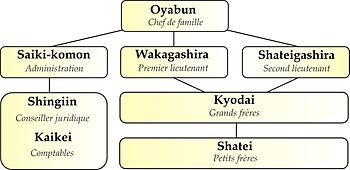
The yakuza have a structure similar to the Sicilian mafia, with the clan (組, kumi) organized as a family (一家, ikka). They have adopted the traditional hierarchical structure of Japanese society, pyramidal, but also family-based, although members are not related by blood. The clan leader (組, kumi
The clan leader (組長, kumichō) is considered a patriarch, and called oya (親) or oyabun (親分, literally "parent, chief," the equivalent of godfather). This title is passed from father to son, as a kind of feudal right, or to a person in whom the oyabun has complete trust.
Each member (組員, kumi-in) accepted into the yakuza must accept this kobun (子分, literally "child, protected") status, promising unconditional loyalty and obedience to his boss. The entire structure is based on this oyabun-kobun relationship.
The oyabun, as a good father, is obliged to provide protection and good advice to his children. Each of the protagonists abides by the code of jingi (仁義, justice and duty). Each kobun can in turn become a "godfather" whenever he wishes, while keeping his affiliation with his own oyabun, and thus expanding the parent organization.
The clan leader is surrounded by advisors (顧問, komon), the closest of whom is called saikō-komon (最高顧問). This is an administrative position that deals with the staff (lawyers, accountants, etc).
Under the chief is the kashira (頭), or more precisely the waka-gashira (若頭): this is the number two in the "family ".
He leads the executives (幹部, kanbu), such as the general manager (本部長, honbuchō), the director of the organizing committee (組織委員長, soshiki iinchō) or the head of the secretariat (事務局長, jimukyokuchō). Its "little brother," the shatei-gashira (舎弟頭), is of the same rank, but lower in authority. He is a relay between the lower ranks and the number two in the clan.
The middle ranks, the cadets (若中, wakachū), are composed of the kyōdai (兄弟, the "brothers"), and the bottom of the hierarchy by the shatei (舎弟, younger brothers). Apprentices are called junkōseiin (準構成員).
Yakuza Gang Rituals and customs
"There were specific rules for almost everything - from how you greeted someone below or above you, how you spoke to people, how you indicated that you were listening, everything. It's a feudal world, very different from ordinary life outside. And it even influences the relationships you have with women."
- Saga Junichi, Memoirs of a Yakuza
The "chivalric way"
The yakuza follow the gokudō (極道), the extreme way. But they also have a certain "code of honor". Indeed, the integration of rōnin in the 15th century brought them a certain number of rules, similar to the Bushido among the Samurai. This line of conduct, the Ninkyōdō (the chivalric way), contains 9 rules:
- Thou shalt not offend good citizens.
- Thou shalt not take the neighbor's wife.
- Thou shalt not steal from the organization.
- Thou shalt not take drugs.
- Thou shalt obey and respect thy superior.
- Thou shalt accept to die for the father or to go to jail for him.
- Thou shalt not talk about the group to anyone.
- In prison you shall not say anything.
- It is not allowed to kill a katagi (non-underworld person).
The induction ceremony
To become a full member of the family you have to prove yourself, nationality is not important, you have to prove your attachment to the traditions and to the family. This is why each aspirant has to follow a kind of apprenticeship which lasts about 6 months, and if he has proved himself worthy, he is inducted into the family.
He then participates in the ceremony of admission of the new recruits, it is a common ritual to several mafias in the world. For the yakuza, this step is called the Sakazuki.
The entrance ritual is very ceremonial: it consists of a reception whose date is fixed in accordance with the lunar calendar. All the participants are dressed in kimono, and are placed in an established order, in the most complete silence. The ceremony takes place in a traditional hall, where a Shinto altar and a low table with gifts are stored.
The Oyabun and the future member kneel next to each other in front of witnesses (Azukarinin), and prepare sake mixed with salt and fish bones , then pour the liquid into cups. The Oyabun's is filled completely, in order to respect his status.
Sake here symbolizes the bonds of blood. They then take a sip, exchange cups, and drink again. The new Kobun seals in this way his belonging to the family and to his Oyabun, he keeps his cup (named Oyako Sakazuki), it is the symbol of his loyalty. If a yakuza gives back his Oyako Sakazuki to his chief, he breaks his links with his family.
Afterwards, the Oyabun makes a speech recalling the principles of yakuza , loyalty and blind obedience. The ritual closes with the breaking of silence, where all the participants shout in unison "Omedetō gozaimasu".
The first steps in the organization
Following this ceremony, the newcomer is a full-fledged yakuza, and must help the family by finding work.
He then relies on the territory of the family, the influence of his clan and his personal experience, where he is helped by his elders who will employ him. His work will also depend on the specialization of his family.
A part of his profits will be given to his superior, according to his rank, who will give it to his superior, and so on. It is common for new members to be exempted from this practice in the early stages, so as not to penalize the growth of their business.
If they later have difficulty paying, family solidarity will come into play, and another member may pay for them. Nevertheless, if this situation is recurrent, the member is demoted, and if on the contrary he contributes a lot, he goes up in rank. If he rises sufficiently in rank, he will be allowed to found his own clan.
Yakuza Gang In case of misconduct
The yubitsume
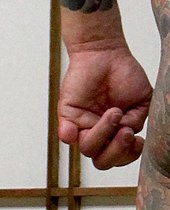
There is another, simpler ceremony: the departure, or dismissal ceremony (指詰め, Yubitsume). If a yakuza breaks the code of honor, he must, to make amends, mutilate his own little finger and offer it to the Oyabun, and return the cup of sake he received during the entrance ritual.
If he repeats his fault, he must repeat the ceremony with the other fingers. This punishment, coming from the Bakuto tradition, is not rare, and few yakuzas reach an old age with all their fingers. They usually keep their mutilated fingers in formaldehyde as a reminder of their disgrace.
If one amputates a phalanx as a result of a mistake, it is called shini-yubi (dead finger). But one can also use this ritual to end a conflict, by giving one's finger to the other clan.
This is called iki-yubi (living finger). Nevertheless, this practice is becoming rarer, for the sake of discretion in front of the authorities. According to a 1993 study, 45% of yakuza have a cut finger, and 15% have been mutilated twice.
The tradition of tattooing
The most practiced ritual within the community remains the tattooing ritual, better known as irezumi in Japan.
It is very painful to perform, as it is still done in the traditional way; the ink is inserted under the skin using non-electric tools, needle bundles attached to a bamboo or more recently stainless steel (thus sterilizable) handle, made by hand. The process is expensive and some full-body tattoos can take months or even years to complete.
More than 68% of yakuza are said to be tattooed56 , and each clan has its own particular tattoo. This practice originated with the Bakuto, whose members tattooed a black circle around their arms for each crime committed.
Today, it is more the result of the clans' desire to differentiate themselves, and a proof of courage and loyalty to their "family", as the process is irreversible.
In some clans, the tattoo has a particular symbolism: the motifs chosen by the clan leaders for the new members are the opposite of their character. For example, a dragon will correspond to a calm person, while a geisha will be associated with a person of aggressive nature.
Yakuza Gang Major families
Law enforcement counted 18,100 yakuza in 2016 (-10% from 2015), 39,100 including associate members (-17%). In 2015, the estimate was 53,300 members. They counted 58,600 yakuza at the end of 2013, compared to 63,200 in 2012. Other estimates counted in September 2012 more than 80,000 yakuza in 22 government-designated criminal organizations.
There are two kinds of yakuza: 41,500 work full time, while 43,200 have side businesses (2007). The number of yakuza has declined significantly in recent years. The number of yakuza has declined significantly following an anti-gang law passed in 1992 by the Japanese government to eliminate crime syndicates.
However, they remain the largest organized crime organization in the world, according to the Guinness Book of World Records. Their membership is concentrated in four main families:
- Yamaguchi-gumi (六代目山口組, Rokudaime Yamaguchi-gumi)
- Sumiyoshi-rengō(住吉連合), sometimes called Sumiyoshi-kai (住吉会)
- Inagawa-Kai(稲川会)
- Tōa Yuai Jigyō Kummiai (東亜友愛事業組合), sometimes called Tōa-kai (東亜会)
The suffixes behind each surname all have a particular meaning. The suffix Gumi could be translated as "band, company, or gang", Kai as "association or society", and Rengō as "coalition" or "federation". They give an indication of the form of association used by the family.
The lucrative activities of yakuza
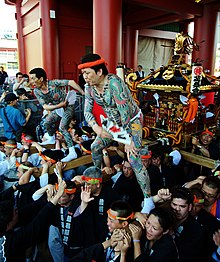
Much of the current activity of the yakuza can be traced back to their feudal origins. Unlike the Italian mafia and the Chinese triads, it is not a secret organization, so the yakuza often have a prominent office, bearing their clan name or emblem. This makes Japan one of the only countries in the world where mafia organizations are out in the open.
The yakuza offices are legally associations (dantai) mostly dedicated to the "pursuit of the chivalric way" (Ninkyôdô). The members have a very specific dress code (sunglasses and colored suits), so that they can be easily identified by the civilians (katagi). Even the way of walking of the yakuzas is different from that of ordinary citizens, more ample and "arrogant".
On the contrary, they may be more conventionally dressed, but when the need arises, they may show off their tattoos to indicate their affiliation. Occasionally they also walk around with badges on their lapels.
The Yamaguchi yakuza family has even published an in-house magazine with an editorial by the godfather urging respect for traditional values, a crime section, a people section, sports and haiku poems, which is distributed to the 28,000 members of the clan.
It joins the periodical Jitsuwa document (実話ドキュメント, Jitsuwa dokyumento), created in 1984 by Takeshobo, published in 70,000 copies since 2013 by Myway and disappearing in 2017.
The corporate racket
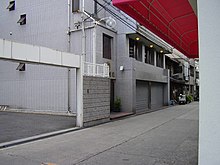
Until recently, most of the yakuza's income came from tithes, levied on merchants and businesses located in their territory. In exchange for the protection and benevolence of the yakuza, they pay a kind of "feudal tax". More than 41% of the owners of large Japanese companies claim to have been victims of this racket.
This situation has continued, mainly because of the reluctance of companies to go to the police for help. This is similar to the Pizzo practiced by the Italian mafias (Cosa Nostra, N'dranghetta or Camorra): the henchmen offer to protect their stores in return for payment, and if they refuse, they loot or even destroy the stores themselves.
The yakuza also derive their income through a typically Japanese form of extortion, known as sōkaiya (総会屋). This is a form of racketeering, and protection. Instead of harassing small businesses, the organization sells its services: it hires itself out to stifle any challenges in shareholder meetings.
To do this, they buy a small number of shares, thereby gaining the right to sit on the company's board of shareholders. The yakuzas then guarantee the wa, the harmony of the meeting, by frightening the ordinary shareholder by their mere presence.
For example, in 1989, Fuji Bank, then Japan's third largest bank, was denounced for having used this system, paying more than 200 million yen to yakuzas. A loan officially intended to "finance private cemeteries", but which was never repaid.
They also engage in simple blackmail, obtaining incriminating or embarrassing information about the practices of a company, or one of its leaders. Once the yakuza have gained a foothold in the company and secured their earnings, they will work for the company, preventing scandals from becoming public, and will be paid in return with bribes.
In some companies, these bribes are even included in the annual budget.
There were over 8,000 sōkaiya in 1982, until a law was passed against them. Today, their number is reportedly down to 1,500.
Nevertheless, 80 percent of companies with sales of more than ¥1 trillion admit to still having contact with them, with about 40 percent reportedly still paying them funds, although this is considered a crime.
The Japanese police are also reluctant to interfere in the internal problems of certain communities, such as in shopping areas, schools/universities, and nightlife areas.
Tacit pacts are made between the police and yakuza, whereby clan members escape arrest for minor offences, such as drunkenness on the street, petty fighting or minor break-ins.In this sense, the yakuza are still considered semi-legitimate organizations.
For example, just after the Kobe earthquake, the Yamaguchi-gumi, headquartered in Kobe, mobilized to help the victims of the disaster (even providing a helicopter), and this was widely reported in the media, in contrast to the much slower response of the Japanese government. For this reason, many yakuza feel that their racket is a kind of legitimate feudal tax.
Professional wrestling
The yakuza have a strong influence in Japanese professional wrestling, puroresu. They are considered to be great supporters of this sport, as well as of MMA, but their interest remains largely financial.
The places where the wrestling matches take place (arenas, stadiums) often belong to them, so they get a percentage of the entrance fees. It is common for wrestlers to be given specific instructions on how to conduct their matches, such as just calling on the yakuzas in the crowd.
Japan's wrestling pioneer, former sumo wrestler Rikidōzan, was killed by a yakuza. They organize underground betting around puroresu, but also sumo, horse racing, and greyhound racing.
Sumo
The yakuza are also very present in sumo, a sport traditionally very appreciated by the Japanese. They organize rigged matches, and controlled the organization of betting, by bribing some athletes in exchange for services. This practice has been exposed, which has brought the sport into disrepute.
The biggest scandals occurred in May 2010. First with the dismantling of the sumo stable Kise (木瀬部屋, Kise-beya) and the demotion of its master Naoya Higonoumi (肥後ノ海 直哉, Higonoumi Naoya ), whose real name was Naoto Sakamoto (坂本 直人, Sakamoto Naoto), for offering seats to the Nagoya honbasho to yakuza of the Kōdō-kai (弘道会).
Then especially on May 20, 2010, when the Shūkan Shinchō magazine claimed that the ōzeki Kotomitsuki was involved in illegal baseball betting with yakuza. The Japan Sumo Association announced on June 28 that it was expelling the wrestler.
Along with him, eighteen other wrestlers also involved were eventually suspended, while the master of the Ōtake stable (大嶽部屋, Ōtake-beya), Tadashige Naya (納谷 忠茂, Naya Tadashige), known as Takatōriki (貴闘力), was expelled.
This case has further repercussions in early 2011 with the arrest of Sadahide Furuichi (古市 貞秀, Furuichi Sadahide), Tetsuya Yabushita (藪下 哲也, Yabushita Tetsuya ) and Shunsaku Yamamoto (山本 俊作, Yamamoto Shunsaku) of the Ōnomatsu stable (阿武松) for organizing illegal betting, again on baseball.
Then, when the police discovered, via emails in the cell phones confiscated during their investigation, evidence of sumo (八百長, yaochō) match fixing between March and June 2010.
Eleven wrestlers, most of them jūryō, and two stable masters were implicated at the time; three of them, the wrestlers Chiyohakuhō (千代白鵬 jūryō) and Enatsukasa (恵那司, sandanme) and stable master Takenawa (竹縄) Kasuganishiki (春日錦), quickly acknowledged the facts.
As a result, the March tournament or haru basho in Osaka was cancelled, the first time since 1946, and admission to the May tournament was made free for all spectators.
After investigations, ten more people were found to be involved in the scandal at the beginning of April; only three of the 23 involved admitted to the facts. Of these 23, 21 were wrestlers: as a result, their superiors, 17 in total, although not involved, were also punished for not having properly supervised their protégés.
Two more wrestlers were then forced to withdraw: Sōkokurai (蒼国来, makuuchi) and Hoshikaze (星風, jūryō). Then it was the turn of wrestler Futen'ō (普天王) to withdraw after being suspended in July 201080.
The May tournament was eventually turned into matches to establish a new ranking for the July tournament in Nagoya, literally "skill review tournament" (技量審査場所, ginryū shinsa basho), and was not broadcast on television.
However, in March 2013, the Tokyo court overturned the NSK's decision following a request from Sōkokurai, who was reinstated for the July tournament.
Betting and games
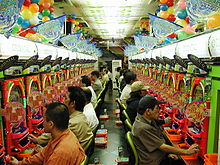
This is a very lucrative sector in Japan, and the traditional area of influence of the yakuza. They organize illegal bets in many fields, such as sumo tournaments, speedboat races, horse races, car races, bicycle races, Auto Race. They also run some lotteries, casinos and control pachinko halls.
This last game has a very important success, the turnover of the pachinko is enormous since it is the third largest Japanese leisure economy after restaurants and tourism.
There are an estimated 18,000 gambling halls in the country, often run by managers of Korean origin, many of whom have close ties to the yakuza. The yakuza use these gambling dens as a source of income, but also as a front for laundering their money.
Real estate
The yakuza can play on their image with the population and intimidate them. They have ties to the financial markets and interests in real estate transactions, through the jiageya (地上げ屋).
Because Japanese law makes it very difficult to evict tenants and expropriate land, jiageya are gangs that specialize in intimidation, selling out to companies wanting to do much larger development projects. They may also intervene in private matters, such as the sale of land to the public. They may also intervene in private cases.
The Japanese judicial system is slow and costly, with costs having to be advanced as soon as a procedure is launched , which is why citizens sometimes resort to the yakuzas to intervene in certain cases, such as neighbourhood disputes, debt collection.
In 1993, for example, a survey showed that 23% of men and 17% of women thought that asking the yakuza for help in getting money, contracts and settling disputes by using force was not "wrong" or even "unavoidable". They also find themselves in the role of the yakuza, who are the most important players in the economy.
They also find themselves in the role of loan sharks: faced with the increasing difficulty of accessing loans legally for most Japanese, they have taken to lending money. They then lent at high rates, often demanding a guarantor who was financially healthier than the borrower.
The sex industry
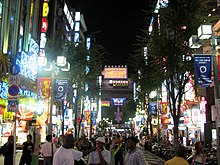
Detailed articles: prostitution in Japan and pornography in Japan.
Prostitution of women in general is an activity carried out by yakuzas. This phenomenon is said to affect between 100,000 and 150,000 women per year in the archipelago.
The women forced into prostitution in Japan come mainly from South-East Asia and the former USSR , few Japanese women are involved. Some Japanese girls do, however, occasionally engage in prostitution on their own initiative, in order to improve their standard of living and obtain clothing or other luxury items.
It is estimated that 8 percent of Japanese girls engage in prostitution. The authorities are often criticized for not responding adequately to this problem, even though prostitution has been prohibited in Japan for more than 50 years.
For example, the yakuza maintain a very large prostitution business in Kabukichō, a district of Shinjuku; it is currently one of the largest pleasure centers in the world, despite its small size (3,500 m2).
There are reportedly more than 1,000 yakuza in the area, and more than 120 businesses are said to be under their control. Most of the buildings are bars, love hotels, strip shows and places of prostitution like soapland. But there are also "standard" cinemas and restaurants.
All of these establishments have the particularity of being on the street. The district experienced a major boom in the second half of the 1980s, with the arrival of many foreigners and the establishment of the Chinese mafia, which cohabits in the same space as the yakuza clans.
The yakuzas are also strongly involved in pornography, they organize a smuggling of uncensored pornographic material coming from Europe and America (the local pornographic offer being censored, which is not the case of the pornography coming from Europe and America).
Trafficking
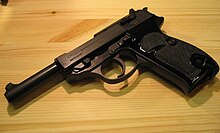
- Drug trafficking is a fairly recent source of income, which has developed as a result of their global expansion, eventually becoming one of the most financially important activities. Prior to the 1992 anti-gang law, there was a certain amount of police tolerance for amphetamine trafficking. The clans had to adapt to this new activity, revising their operating system to be able to launder money on a larger scale. Japanese legislation is very strict in this area (e.g., for 400 grams of cannabis, 4 years in prison).
- Arms trafficking is a very old smuggling activity. It dates back to the middle of the 16th century, with the first imports from Portugal. Japanese legislation is very strict on the possession of weapons, so the yakuzas have developed a parallel market that originates in Asian countries (China, Taiwan, Hong Kong, the Philippines), but also in the United States, where they take advantage of the quality of the products and the accessibility of the weapons. The yakuzas are also involved in the immigration of foreigners to Japan.
- They deal with illegal immigration into Japan. This circuit "provides" them with prostitutes, and at the same time with day laborers for construction and the docks. They also help companies that have been blackmailed before.
Thanks to these various methods, the yakuzas have an annual turnover estimated at 34 billion euros in 2003.
Yakuza Gang Geographic location
Historical roots in Japan
Each mafia has its own "point of appearance and propagation ", which is still active today. In most cases, it corresponds to a city and its surroundings. These "mafia capitals" are still controlled today by the mafias that originated there.
The yakuzas are no exception to this rule. They are historically present on the main island of Honshu, in Kansai (western part of Honshu), and in Kanto (central-eastern part). Kansai was mostly occupied by Tekiya, while Kanto was mostly occupied by Bakuto. This heritage has led to certain specificities which have long persisted among the yakuza, but which are currently tending to fade away.
The clans, while remaining very much rooted locally, have also managed to develop a network outside Japan, helped by their establishment in the major Japanese ports of Tokyo, Kobe, and Yokohama. However, their international presence remains more limited than that of the other major mafias.
International expansion
In Southeast Asia
The yakuza have been involved in Southeast Asia since the 1960s, developing sex tourism and drug trafficking. This is the area where they are still the most active today.
They are thus present in South Korea, China, Taiwan, Thailand, the Philippines, Vietnam and the Pacific islands (notably Hawaii)
In the United States
In a movement similar to that followed by other mafias, the yakuzas have accompanied the expansion of the Japanese community's presence in the world.
As a result, they can be found in the United States, which has a large Japanese émigré community (over 850,000 people), mainly in Hawaii and California. In the 1980s, they took advantage of the real estate boom in the United States to invest, particularly in Hawaii, Las Vegas and Los Angeles. Hawaii is also used as an investment destination for Japanese.
Hawaii is also used as a hub to the United States for methamphetamine103 and firearms smuggled into Japan. The yakuza have easily integrated into the local population, as many of the islands' regular tourists come from Japan or other Asian countries.
It has been estimated that the yakuza controlled about 90% of the methamphetamine traffic in Hawaii in 1988. They also act as touts, directing Japanese tourists to brothels and gambling dens.
In California, the yakuza have made alliances with local Vietnamese and Korean groups, and also with Chinese triads. They are present in Los Angeles, San Francisco, Seattle, and Las Vegas.
They have been spotted in Las Vegas, where they have been operating for several years. They have been spotted in Las Vegas and New York guiding Japanese tourists to gambling establishments, both legal and illegal.
They also take advantage of the lure of Los Angeles for young women who dream of entering the movie business. Clan members use this situation to recruit for their pornographic production and prostitution businesses in Japan. Indeed, Western women are very popular among Japanese men, especially blondes.
In Mexico
The yakuzas are present almost everywhere in the world, including in Mexico, particularly in the illegal immigration channels. In Mexico, during the 1990s, a couple of so-called employers recruited young girls (mainly with tourism diplomas and a good knowledge of English) throughout the country, promising them work in Japan.
But upon their arrival in the country, they actually entered a prostitution network. Some of them managed to escape and upon their return to Mexico, they informed the authorities. The culprits were arrested and convicted, not for pimping because of the lack of informants, but only for illegal immigration.
A similar case occurred in Peru. According to the estimates of the Hispanic Women's Association (based in Miami), there are about 3,000 Mexican women working as prostitutes in Japan, having been recruited by the different yakuza clans.
In Australia
Yakuza presence in Australia is currently minimal, being limited mainly to the Gold Coast, where clan members come to launder money in casinos, or extort money from Japanese companies working mainly in the tourism industry. They are also linked to drug trafficking.
It would appear that the yakuza have no known roots in Australia, but with the new anti-gang laws passed in Japan, this may change, leading to conflicts with existing mafia organizations such as the Mafia, 'Ndrangheta and the Irish mafia.
Yakuza Gang in popular culture
The world of the yakuza is an important source of inspiration for Japanese culture, serving as a basis for the works of authors, scriptwriters and even game designers. A significant number of films, books and other works have been written about the yakuza. A large number of films and books have been dedicated to the yakuza, and more recently video games.
Cinema
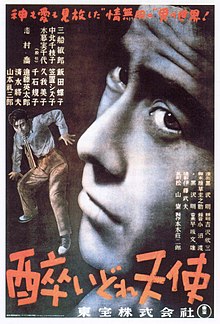
In Japan, a very popular film genre focuses on the lives and relationships of yakuza, the Yakuza eiga. Foreign filmmakers have also been interested in the subject. The films where yakuzas are present are very numerous, among the most outstanding we can quote :
- 1961 Pigs and Battleships Shōhei Imamura
- 1971 Gang War in Okinawa Kinji Fukasaku
- 1973 Fighting without a code of honor Kinji Fukasaku
- 1975 The Yakuza Sydney Pollack
- 1989 Black Rain Ridley Scott
- 1991 In the Claws of the Red Dragon Mark L. Lester
- 1993 Rising Sun Philip Kaufman
- 1995 Crying Freeman Christophe Gans
- 1997 Postman Blues (Posutoman Burusu) Sabu
- 1998 Samurai Fiction Hiroyuki Nakano
- 2000 Aniki, my brother Takeshi Kitano
- 2007 WAR Phillip G. Atwell
- 2007 Young Yakuza Jean-Pierre Limosin
- 2009 Shinjuku Incident Derek Yee
- 2010 Outrage Takeshi Kitano
- 2012 Outrage: Beyond Takeshi Kitano
- 2017 Outrage Coda Takeshi Kitano
- 2018 The Outsider Martin Zandvliet
- 2019 First Love, the last yakuza Takashi Miike
- 2020 A Family Michihito Fujii
Manga, anime and drama
- Gokusen: manga (2000), drama (2002, 2005 and 2008) and anime (2004). The heiress of a clan becomes a teacher in a difficult high school, and is assigned a class of delinquents, the 3-D. She will teach them mathematics, while getting progressively involved on several other levels, going as far as getting her students out of trouble by sometimes using her skills as a clan heiress.
- My Boss, My Hero: film (2001), drama (2002). A young gang leader, who seems to be too stupid to do his job, misses out on a big deal because he can't count properly, and is also practically illiterate. In order to succeed to the clan, his father forces him to go back to high school to get his diploma. He must not reveal his yakuza membership, or he will be immediately expelled.
- Twittering birds never fly : manga of the yaoi genre (2011). Yashiro, a totally depraved masochist, boss of a yakuza clan and of the finance company Shinsei, hires as a bodyguard Chikara Domeki, a secretive and not very talkative man. While Yashiro would like to take advantage of Domeki's body, the latter is powerless107.
- Like the Beast : manga, yaoi (2008). Tomoharu Ueda, a police officer in a small local station, meets Aki Gotôda, the son of the head of a yakuza clan, in pursuit of an underwear thief. The next morning, Aki shows up at his house to thank him for his help and ends up making a declaration of love to him. Ueda is stunned and tells him that they should get to know each other, but Aki is stubborn and will do anything to get what he wants.
Several manga by Ryōichi Ikegami are set in the Japanese underworld:
- Crying Freeman (1986).
- Sanctuary (1990): Hôjô and Asami, childhood friends, have only one objective: to give back to the Japanese the taste of living, and to shake the country. To do this, they decide to climb the ladder of power, one in the light, as a politician, the other in the dark, as a yakuza.
- Strain (1996).
- Heat (1999): Tatsumi Karasawa is the owner of a club in Tokyo who plans to expand his business. He gives a hard time not only to the police, but also to the yakuza, of which he manages however to rally a certain number on his side.
Video games
- The Yakuza series (Ryū ga Gotoku in Japanese) features several adventures that follow one another and are closely related to the yakuza. Several films adapt episodes from this series including Yakuza: Order of the Dragon by Takashi Miike.
- Nexus: The Jupiter Incident: one of the opponents in the first part of the game is a company financed by the yakuza.
- In Grand Theft Auto III, one of the gangs in the second city, Staunton, is called the Yakuza.
- In the Saints Row series there is a Yakuza gang called the Ronin.
- In the game Payday 2, one of the additional contents offers to play as a Yakuza, called Jiro.
- In the game Yandere Simulator, the Yakuza are the allies of the main character, helping him in some quests.
- In the game Danganronpa 2: Goodbye Despair, a student has the talent to be the Ultimate Yakuza, Fuyuhiko Kuzuryu . We learn that he is the direct descendant and heir of his family, the Kuzuryu family.

